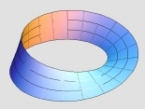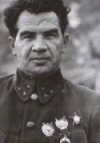Yoozername
Posts: 1121
Joined: 3/4/2006
Status: offline

|
Zaloga:
The bocage presented a substantial obstacle to tanks. While it was certainly possible for tanks to charge the hedgerows and push over the top, this exposed their thin belly armour to German anti-tank weapons. Some hedges were so entangled with foliage and small trees that a tank could become trapped if attempting to push through, or could shed a track, effectively immobilising it.
One of the central aims of Operation Cobra in July 1944 was to break out of the bocage country into the open countryside south of St. Lo where the heavily mechanised US Army could exploit its advantages. A variety of schemes were tried to deal with the hedgerows. Combat engineer units had been advocating the use of tank dozers to breach them. These were ordinary M4 medium tanks fitted with a special hydraulically operated M1 bulldozer blade. Originally developed in 1943, there were few in Normandy in July 1944. Experiments made clear that the dozer blades could work, but some hedges were so thick that satchel charges were needed to blow a clean gap. In July, the US First Army placed an urgent request for supply of 278 blades with an aim to providing at least one dozer per tank platoon. In fact, by the time of Operation Cobra on 25 July, there were only about 40 in service.
Another approach was conceived by tankers of the 747th Tank Battalion, attached to the 29th Division. In conjunction with Lt. Col. Robert Ploger's 121st Engineer Combat Battalion, the tankers experimented with combined engineer-tank tactics to create breaches in the hedge wide enough for a tank to pass through. During an attack on 24 June, the engineers placed a pair of 24 lb charges eight feet apart at the base of the hedge. The tactics worked, but the engineers decided that a charge double the size was really needed. Ploger began a more careful study of the problem. A tank company, penetrating one and a half miles through bocage country, would on average encounter 34 separate hedgerows. This would require 17 tons of explosive per company or about 60 tons per battalion. This was clearly beyond the resources of any engineer battalion.
After bloody experience in bocage fighting, the 29th Division commander, Maj. Gen. Charles Gebhardt, ordered the creation of a special training area near Couvains prior to a planned assault towards St. Lo on 11 July 1944. The M4 medium tanks and infantry squads practised a variety of new tactics to fight in the hedgerows, leading to the slogan 'One Squad, one tank, one field'. Ploger and the tankers continued to experiment with explosive breaching, and found that a much smaller charge could be used if it could be buried deep within the base of the hedge. However, digging holes in the hedge while under fire was both time-consuming and dangerous. One of the tankers came up with the idea of fitting a pair of timber prongs on the front of each tank, called a 'Salad Fork'. When a breach in the bocage was needed, a tank would charge across the field and embed the prongs in the base of the hedge. When the tank backed out, it would pull out the timber prong, leaving small tunnels. The engineers pre-packaged 15 lb of explosive in the fibre-board containers used to transport 105 mm artillery ammunition. Two of these improvised demolition charges could create a gap wide enough for a tank and the accompanying infantry. The small tracked M29 Weasel utility vehicles would follow the tank-engineer team, bringing along extra explosive. As only 53 tanks were available for the 11 July assault, they were concentrated in the sectors of the 116th Regiment. These new tactics and training paid off, and the 116th Regiment succeeded in rupturing the German lines far more effectively than in the past. These tactics were copied by other units, including the 703rd Tank Battalion attached to the 4th Infantry Division. There are records that indicate that other tank units in the neighboring V Corps fielded 'brush cutters' on their tanks in July, but details are lacking.
The 11 July 1944 attack by the 747th Tank Battalion disclosed problems with the 'Salad Forks'. The timbers were often bent or wrenched off the tanks during the violent collision with the hedge. On a more positive note, it was found that in some cases, the impact of the Salad Fork alone could breach a hedge. This led Lt. Charles Green to devise a more durable 'tank bumper' or 'Green Dozer' made out of railroad tracks. These were welded to the tanks of the 747th Tank Battalion in mid-July for the upcoming offensive.
Curiously enough, a very similar device was dreamed up almost simultaneously by the 2nd Armored Division. It is possible that they were aware of the experiments by the 747th Tank Battalion, as these had been demonstrated to a number of officers. The division's cavalry unit, the 102nd Cavalry Reconnaissance Squadron, had been discussing ways to cut through the hedges. Sgt. Curtis G. Culin devised a set of prongs not very different from Green's Tank Bumper, and supervised the construction of a prototype using salvaged German tank obstacles. Tests with the device proved very successful, and it was dubbed the Rhinoceros. It received many other names including the Culin cutter, hedgerow prongs, hedgerow cutters, and various combinations of these. Tanks fitted with the device were dubbed Rhino tanks. What separated Culin's device from other similar schemes was a bit of luck. On 14 July, the First Army commander, Gen. Omar Bradley visited the 2nd Armored Division prior to Operation Cobra. Bradley had seen an earlier demonstration of the Salad Fork, but was more impressed by the Culin Rhino since it didn't require explosives. He ordered the First Army Ordnance Section to begin construction of as many of these devices on an emergency basis.
The best source of supply for the steel prongs was the litter of 'Rommel's Asparagus' along the Normandy beaches. Rommel had ordered the installation of hundreds of steel anti-tank obstructions, and these served as the raw material for the prongs. Between 15 July and 25 July, when Operation Cobra started, over 500 Rhinos were manufactured. This was enough for about 60 per cent of the tanks in First Army taking part in the initial assault. On 22 July, a modified M5A1 light tank was demonstrated to Gen. George S. Patton and a team from the 3rd Armored Division. After the demonstration, the division was ordered to build its own Rhino devices on a crash programme. A workshop was set up in St. Jean de Daye under the supervision of Warrant Officer Douglas, who had been a professional welder in civilian life. Douglas had no plans for the Culin device, and devised a modified version that was distinguished by a pair of triangular plates at either end which he felt would penetrate the hedge better. A total of 57 of these 'Douglas cutters' were attached to tanks of the 3rd Armored Division prior to Cobra. The various types of Rhino devices were all considered top secret, and Bradley ordered that none be used until the main operation began.
The use of the Rhino tanks in Operation Cobra has become something of legend. Nearly all accounts of the campaign mention the devices, even if they mention none of the other innovations introduced during Cobra, such as the new 76 mm gun M4 medium tank, and the new tank-infantry communication aids. One recent study of Cobra, Col. James Carafano's 'After D-Day', goes so far as to label the stories of the Rhino tanks a myth. Certainly, the importance of the Rhino tanks has tended to be exaggerated. It is an appealing tale of ingenuity in the heat of battle. It makes for a good story, particularly in popular histories and in television documentaries. It is far more dramatic, especially on TV, than the technical complexity of tank radios, tactical improvements and other less visual innovations.
Were the Rhino tanks effective? In fact, there is very little evidence. Some tank units that used Rhino devices on the first day of the battle, 25 July, found that they were no panacea. The problem was not so much the Rhinos as the pre-attack bombardment which churned up the pastures, which made it difficult to charge across the fields and build up enough speed to breach the hedgerows. Other units such as the 3rd Armored Division had little luck with the hedge cutters. But they had been added to their tanks at the very last minute with little chance to practice the new tank-infantry tactics. The 3rd Armored Division had far fewer tanks with hedge cutters than the 2nd Armored Division, only about 25 per cent compared to almost 75 per cent. It might have been expected that the 2nd Armored Division, which put up such a sterling performance in Cobra, might have emerged as champions of the device they had helped pioneer. In fact, operational accounts of the 2nd Armored Division in Cobra provide few indications that the devices ever played much of a role. This had more to do with the conduct of the fighting than with any technical virtue or failing of the Rhinos. The preliminary air attack against the Panzer Lehr Division shattered the main force opposing the 2nd Armored Division. As a result, the division aggressively pushed through the German defences. Rather than struggle cross-country through the bocage, the 2nd Armored Division used the country roads wherever possible, avoiding the need to use the Rhinos. Tankers that I have interviewed over the years had mixed feelings about the Rhinos. Some said that the Rhino worked, but that it was hard on the crew. Others said they hardly ever used it, as once the break-through began, the situation was so fluid that it was seldom needed. In contrast, the far less celebrated dozer tanks are often mentioned, since they were useful not only in breaking through the hedgerows, but in repairing the bomb damaged roads. Whether effective or not, the Rhino tanks have become one of the popular legends of the Normandy campaign, and are likely to remain so in spite of debunking by historians.
|
 Printable Version
Printable Version












 New Messages
New Messages No New Messages
No New Messages Hot Topic w/ New Messages
Hot Topic w/ New Messages Hot Topic w/o New Messages
Hot Topic w/o New Messages Locked w/ New Messages
Locked w/ New Messages Locked w/o New Messages
Locked w/o New Messages Post New Thread
Post New Thread